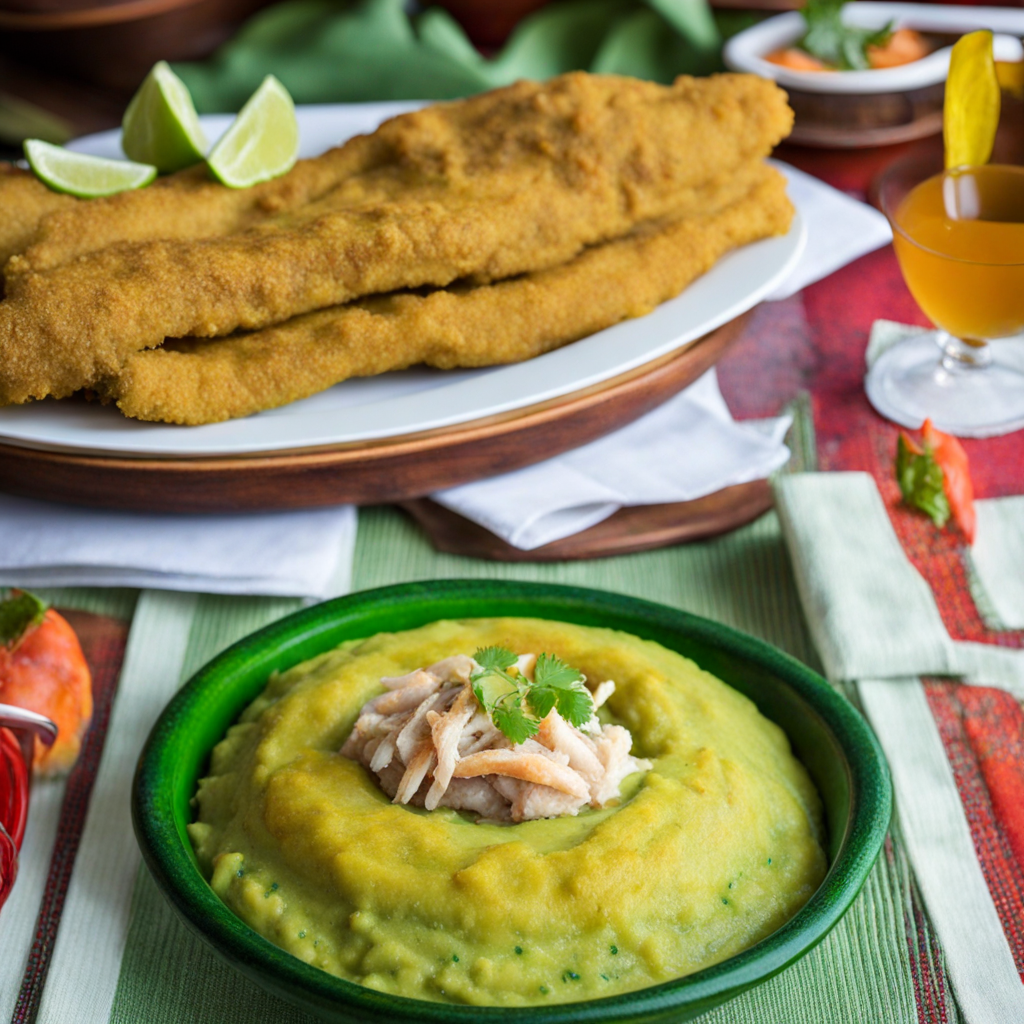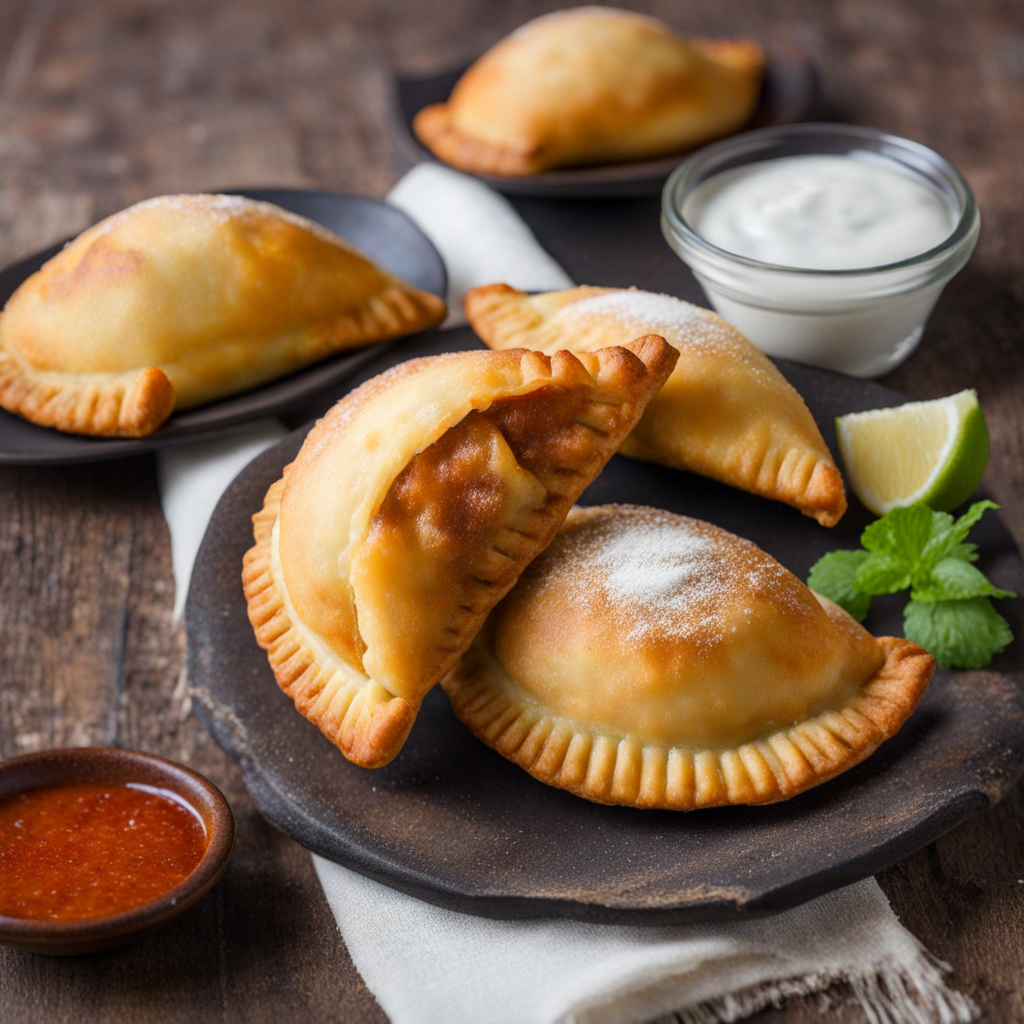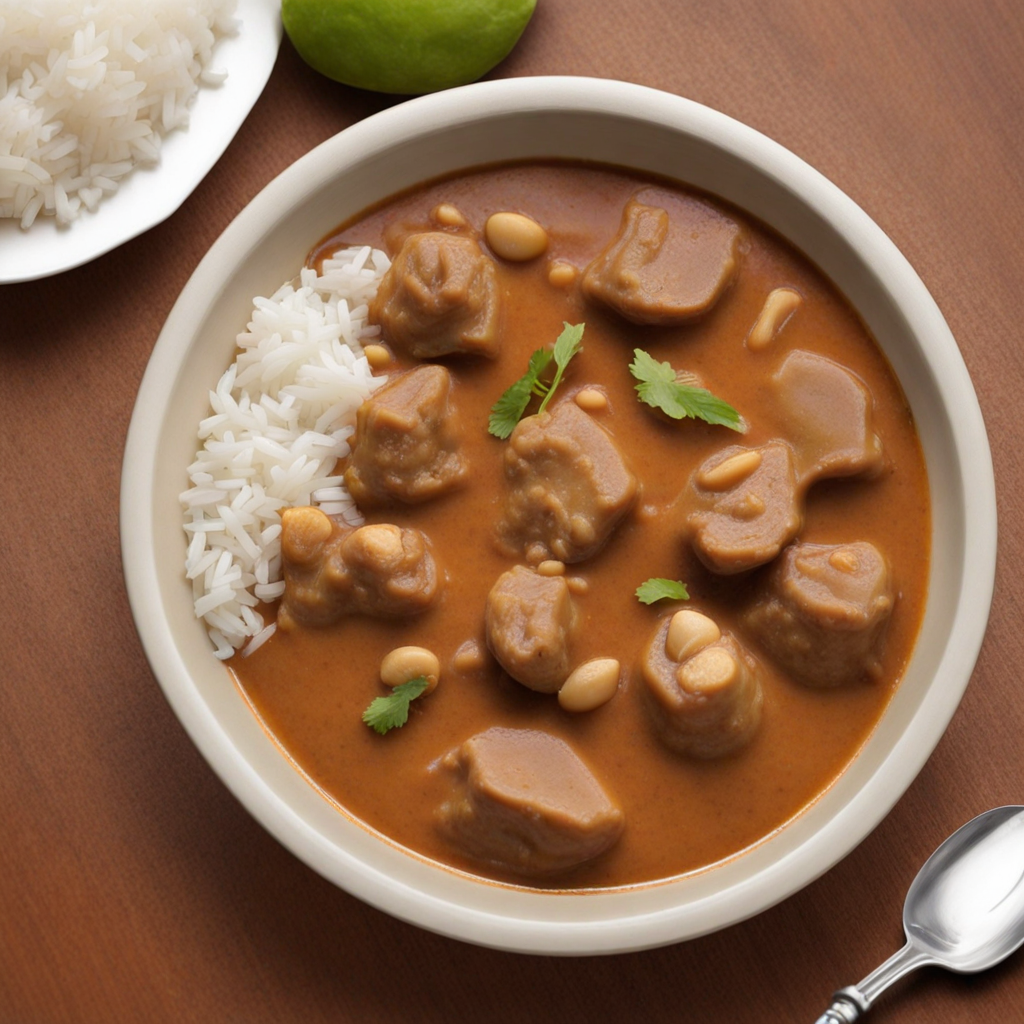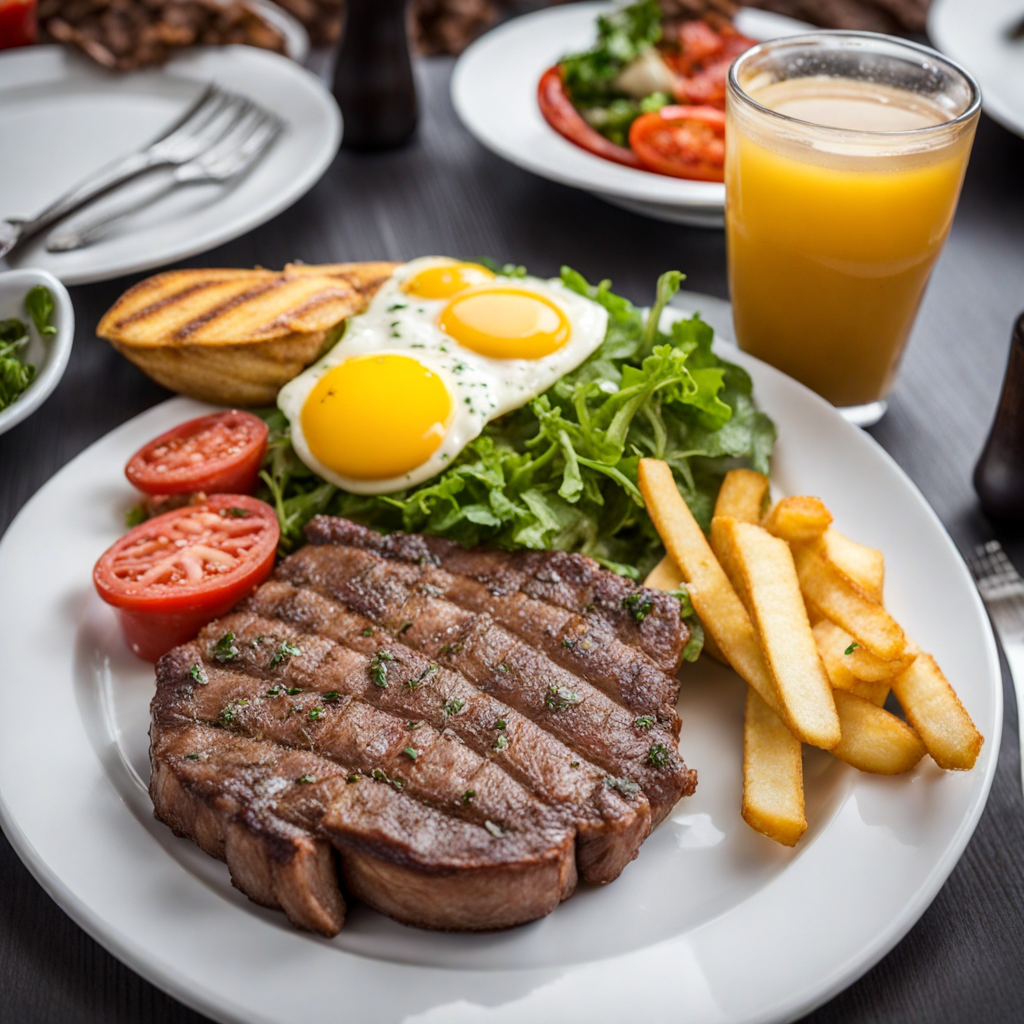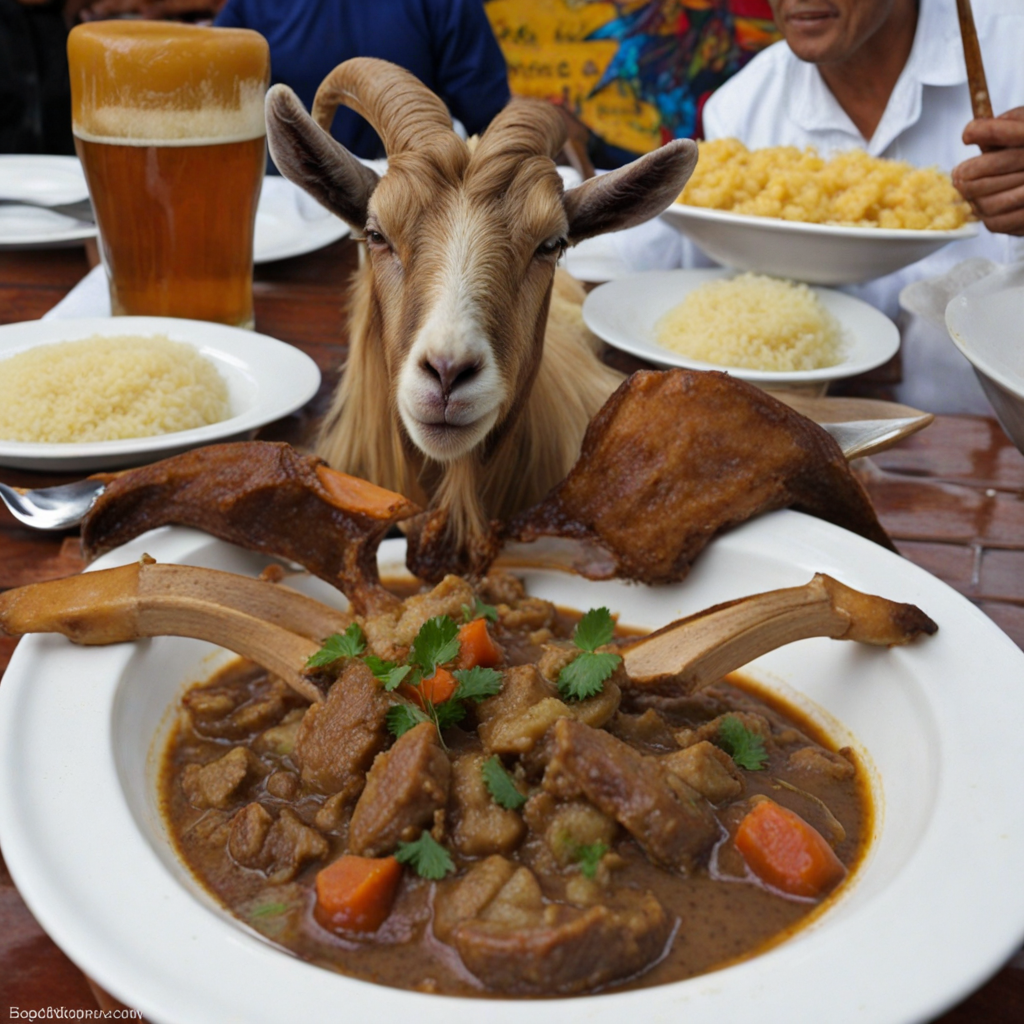Corviche
Corviche is a delightful Ecuadorian dish that showcases the country’s rich culinary heritage, combining flavors and textures that are both unique and satisfying. At its core, corviche consists of a base made from green plantains, which are cooked, mashed, and then shaped into a thick, oval patty. This starchy foundation is often enriched with spices and seasonings, giving it a subtle yet distinct flavor that pairs beautifully with its accompanying filling. Traditionally, the stuffing is made from a mixture of fish, often tilapia or another local catch, seasoned with garlic, onion, and various herbs, creating a savory profile that is sure to tantalize your taste buds. Once assembled, the plantain patties are typically deep-fried to achieve a crispy exterior that contrasts wonderfully with the tender and flavorful filling inside. The frying process not only adds texture but also enhances the overall taste, making corviche an irresistible snack or meal. The golden-brown crust is enticing, and as you bite into it, you are greeted with the warm, spiced fish mixture, making each bite a delightful experience. Corviche is often served with various accompaniments, such as a tangy salsa or spicy sauce, which elevates the dish even further. It is commonly enjoyed as a street food option in Ecuador, where vendors serve it fresh and hot, making it a popular choice for both locals and visitors alike. Whether enjoyed as a quick snack or as part of a larger meal, corviche is a dish that encapsulates the vibrant flavors of Ecuador and is sure to leave a lasting impression on anyone willing to embark on this culinary adventure.
How It Became This Dish
The History of Corviche: A Culinary Treasure of Ecuador Corviche is a traditional Ecuadorian dish that encapsulates the rich tapestry of the country's vibrant culture and diverse culinary heritage. This fascinating food item, often enjoyed as a street food staple, has roots that trace back to indigenous communities and has evolved through centuries of social, economic, and political change. To understand Corviche fully, we must dive into its origins, cultural significance, and the ways it has developed over time. Origins The roots of Corviche can be traced back to the coastal regions of Ecuador, particularly the province of Esmeraldas. Inhabited by various indigenous groups, including the Afro-Ecuadorian communities, the area has a long history of blending Indigenous and African culinary traditions. The name "Corviche" itself is believed to be derived from the African word "kawichi," which signifies a food made of dough, highlighting the cultural fusion that characterizes this dish. At its core, Corviche consists of a dough made from green plantains, which are mashed and combined with a variety of ingredients to create a flavorful pastry. The choice of filling typically includes fish, most commonly tilapia or other local varieties, seasoned with spices and often accompanied by peanut sauce. The dish is then shaped into a crescent or oval form and deep-fried to achieve a crispy exterior, while the inside remains soft and flavorful. Cultural Significance Corviche is more than just a dish; it is a symbol of community and identity for many Ecuadorians, especially those from the coastal regions. The preparation and consumption of Corviche often take place during communal gatherings, celebrations, and festivals, serving as a link between generations. It is common for families to pass down recipes, ensuring that the traditional methods of preparation are preserved. In Esmeraldas, Corviche is often featured in festive events, such as patron saint celebrations, weddings, and local fiestas. Its presence at these events underscores its importance as a communal food that fosters social bonds. The dish encapsulates the spirit of togetherness, as families and friends come together to share meals and celebrate their heritage. Moreover, Corviche has become emblematic of the Afro-Ecuadorian culture, which has made significant contributions to the country’s cultural landscape. The dish embodies the resilience and adaptability of these communities, reflecting how they have blended their African roots with local ingredients and cooking techniques. This cultural significance extends beyond the plate, as Corviche serves as a reminder of the history of migration, adaptation, and cultural exchange that has shaped Ecuadorian society. Development Over Time The evolution of Corviche over the centuries can be observed in its preparation methods, ingredients, and the contexts in which it is consumed. Initially, the dish was primarily made with locally sourced ingredients, reflecting the agricultural practices of the indigenous people. The availability of plantains and fish from the coastal waters made Corviche a practical and nourishing food option. As Ecuador underwent social and economic transformations, particularly during the colonial period and the wave of African migration, Corviche began to incorporate new flavors and techniques. The introduction of spices and cooking methods from Africa enriched the dish, making it even more complex. Additionally, the use of peanut sauce, a common accompaniment, further illustrates the blending of culinary traditions. In the 20th century, the rise of urbanization in Ecuador brought about changes in food consumption patterns. Street food culture blossomed, and Corviche found its place as a beloved snack among city dwellers. Street vendors, known as "corvicheros," began to serve Corviche in bustling markets and on street corners, making it accessible to a wider audience. Its popularity surged, and it became a quintessential part of the Ecuadorian culinary landscape. As globalization increased, Corviche began to be recognized beyond Ecuador's borders. Ecuadorian expatriates and travelers introduced the dish to international communities, leading to a growing interest in Ecuadorian cuisine. Restaurants began to feature Corviche on their menus, often offering variations that catered to diverse palates while still honoring the traditional flavors. Modern Interpretations and Globalization In recent years, Corviche has continued to evolve. Contemporary chefs and food enthusiasts have experimented with the dish, incorporating innovative fillings, such as shrimp or mixed seafood, and adapting the recipe to include gluten-free options for a broader audience. These modern interpretations reflect the ongoing dialogue between tradition and innovation, ensuring that Corviche remains relevant in an ever-changing culinary landscape. The global interest in Ecuadorian cuisine has also led to a resurgence of pride in traditional dishes like Corviche. Culinary festivals, food tours, and cooking classes focusing on Ecuadorian gastronomy have emerged, allowing both locals and tourists to engage with this dish in meaningful ways. Social media has played a significant role in this revival, with pictures of Corviche flooding platforms, showcasing its visual appeal and inviting a new generation to explore its flavors. Moreover, Corviche has become a symbol of cultural heritage preservation. Organizations and community groups are working to promote traditional culinary practices, ensuring that younger generations understand the history and significance behind the dish. This effort not only celebrates Ecuadorian identity but also fosters a sense of pride among local communities. Conclusion Corviche is a culinary treasure of Ecuador that embodies the country's rich cultural diversity and history. From its indigenous roots to its modern interpretations, this dish has stood the test of time, adapting to changes while maintaining its essential character. It serves as a reminder of the interconnectedness of food, culture, and identity, illustrating how a simple dish can carry profound meaning and history. As Ecuador continues to navigate the complexities of globalization and cultural exchange, Corviche remains a beloved staple, bringing people together and celebrating the beauty of Ecuadorian heritage. Whether enjoyed at a bustling street corner or a family gathering, Corviche is a testament to the enduring power of food to connect, nourish, and tell the stories of the people who create it.
You may like
Discover local flavors from Ecuador


